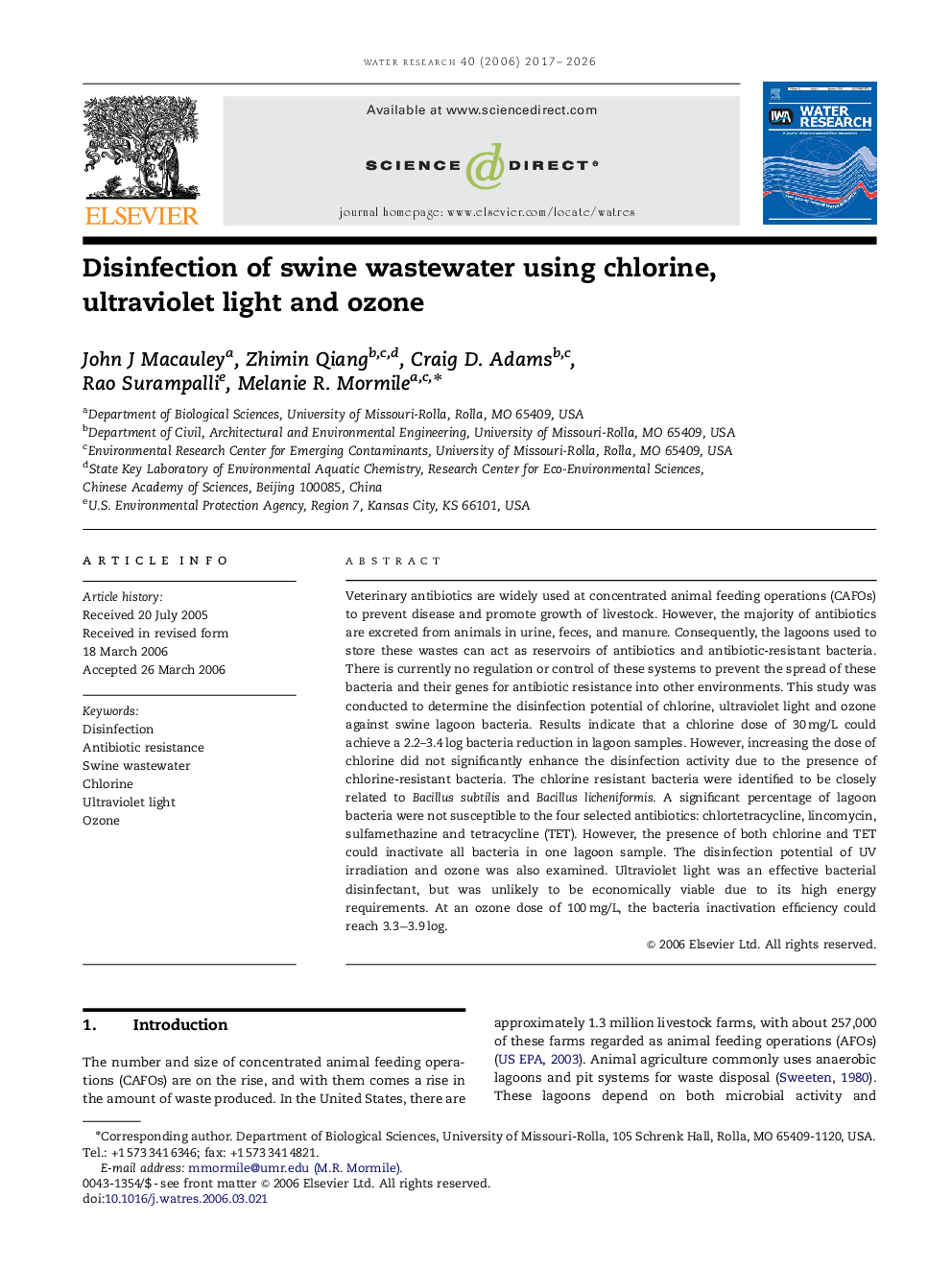| کد مقاله | کد نشریه | سال انتشار | مقاله انگلیسی | نسخه تمام متن |
|---|---|---|---|---|
| 4486233 | 1316980 | 2017 | 10 صفحه PDF | دانلود رایگان |
Veterinary antibiotics are widely used at concentrated animal feeding operations (CAFOs) to prevent disease and promote growth of livestock. However, the majority of antibiotics are excreted from animals in urine, feces, and manure. Consequently, the lagoons used to store these wastes can act as reservoirs of antibiotics and antibiotic-resistant bacteria. There is currently no regulation or control of these systems to prevent the spread of these bacteria and their genes for antibiotic resistance into other environments. This study was conducted to determine the disinfection potential of chlorine, ultraviolet light and ozone against swine lagoon bacteria. Results indicate that a chlorine dose of 30 mg/L could achieve a 2.2–3.4 log bacteria reduction in lagoon samples. However, increasing the dose of chlorine did not significantly enhance the disinfection activity due to the presence of chlorine-resistant bacteria. The chlorine resistant bacteria were identified to be closely related to Bacillus subtilis and Bacillus licheniformis. A significant percentage of lagoon bacteria were not susceptible to the four selected antibiotics: chlortetracycline, lincomycin, sulfamethazine and tetracycline (TET). However, the presence of both chlorine and TET could inactivate all bacteria in one lagoon sample. The disinfection potential of UV irradiation and ozone was also examined. Ultraviolet light was an effective bacterial disinfectant, but was unlikely to be economically viable due to its high energy requirements. At an ozone dose of 100 mg/L, the bacteria inactivation efficiency could reach 3.3−3.9 log.
Journal: Water Research - Volume 40, Issue 10, June 2006, Pages 2017–2026
